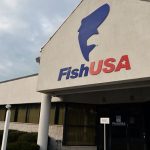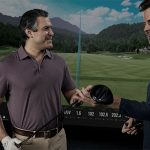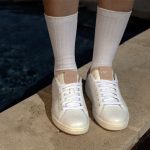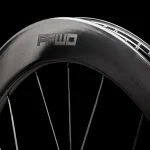Amer Sports finished its first year with Salomon under its corporate umbrella with relatively strong sales and earnings results, especially when considering the amount of integration and restructuring the company underwent over the past twelve months. However, several hurdles were on their track to full integration and profitability. The primary culprit was one of the worst winter seasons in recent memory impacting the groups Q4 results, which is likely to carry over into Q1. In addition, the companys strategic down-sizing of its Wilson golf division and relatively sharp increases in raw material prices in its fitness division impacted the top and bottom line.
In spite of the mild winter, Amer achieved its financial goals for the year. Q4 sales increased 4% to 581.6 million ($750.0 mm) compared to 558.5 million ($664.4 mm) last year. Net income for the quarter out-paced sales growth and increased 15% to 47.0 million ($60.6 mm) versus 40.8 million ($48.5 mm) last year. The primary growth drivers were the factory integrations between Salomon and Atomic, as well as a 2.5 million ($3.2 mm) insurance settlement involving Suunto.
The Salomon acquisition completed at the end of 2005 is still being fully absorbed and the company continued to expect 40 million in cost savings by the end of 2008. Amer will continue to build skis in Romania, Bulgaria, and Austria, where bottlenecks have opened up providing more capacity. The manufacturing employment cuts are still underway and will gradually continue, but the white collar job cuts were completed in June and July.
Salomon Q4 sales increased 11% to 282.1 million ($363.8 mm) versus 255.2 million ($303.6 mm) last year. Salomon experienced delivery problems in Q3, but in Q4 the brand was able to mostly off-set that shortfall and make up the revenues for the full-year. The company saw a 6% increase in winter sports hardgoods during Q4 to 188.6 mm ($243.2 mm).
Salomon apparel sales were the strongest during the quarter, with a 30% increase to 67.3 million ($82.1 mm). Salomon has a very strong pre-season book going into the 2006-07 season, but the mild weather in the U.S. and Europe depressed re-orders and slowed the overall hardgoods business. Salomon Q4 operating profit increased 6% to 40.3 million ($52.0 mm) compared to 37.9 million ($45.1 mm) last year, primarily from integration upsides and a larger mix of higher margin softgoods.
During a presentation & meeting with analysts and the media in Finland, Amer Sports CEO Roger Talermo said that the soft-goods aspect of the portfolio is paying off during this slow winter. “When the winter sports re-orders werent there, at least our portfolio worked well because then dealers continued to purchase Soft Goods and products that could be used in the warmer climate,” he said.
Atomic fourth quarter sales slipped 4% to 82.2 million ($106.0 mm) compared to 85.9 million ($102.2 mm) last year. This entire decline was due to the Asics distribution agreement in Austria, which was discontinued at the end of 2005. Without these sales in the mix last year, Atomic sales were relatively flat, with just over half a percentage point of growth. Alpine boots and cross country equipment were called out as top performers, while ski and binding sales declined.
Mr. Talermo warned the growth in cross country skiing may not sustain itself because of the current conditions in Europe. Apparently several large buying groups felt that there was a Nordic skiing surge taking place in the market and brought in large inventories of Nordic ski gear. With no snow in most of the German and Austrian plains areas, these inventories are still on the shelves. Atomics operating profit fell 22% during the quarter to 14.8 million ($19.1 mm) compared to 19.0 million ($22.6 mm) last year.
Amers management dedicated the majority of their presentation to analyzing the current conditions in the SnowSports market given the warm weather and varying levels of inventory at retail. According to their analysis, most mountain retailers were able to move through the majority of their pre-season inventory. While some urban retailers have been able to clear out these pre-season orders, most of these retailers in both the U.S. and Europe – have been hit hardest by the weather. Because of this, Amers management feels that it is evident that the industry will see lower pre-season bookings in 2008.
Mr. Talermo sees this as an opportunity for market share expansion. “Our attitude is that, when market is very strong, then we take out the fruits so to say. When market is weak, then we have an opportunity to attack,” he said. “This is the moment to gain market share and business in a much different way than in a situation where market would be growing. So we don't necessarily see this as a negative situation and cry over it. We see it as an opportunity to fight forward.”
Suunto fourth quarter sales increased 34% to 22.8 million ($29.4 mm) compared to 17.0 million ($20.2 mm) last year, primarily due to the introduction of the T-Line of fitness monitors. Management said that sell through of the line has been strong also, and the new fitness monitors were not “only a pipeline-fill.” Diving instruments and wristop computers are now 72% of the brands turnover. Going forward, Suunto will be focusing on three main areas. The training line is the first, where management said that they are “just in the beginning of attacking that market.” The Outdoor line will be redesigned this year. The third is the diving market. Suunto worked its way back to profitability during the quarter, with an operating profit of 1.2 million ($1.5 mm) compared to a loss of 700,000 ($800,000) last year.
Mavic recorded 9% sales growth to 29.8 million ($38.4 mm) in what is thought to be a flat bicycle industry. Amer management feels that the bike industry may be slipping this year, but they are waiting on some further information. Mavic earnings declined despite the top line growth. There was a slight change in the mix at Mavic, so there were more OEM sales which have a lower margin.
Precor sales inched up 3% during the fourth quarter to 83.0 million ($107.0 mm) compared to 80.7 million ($96.0 mm) last year. Amer management sees “no reason why the fitness market will slow down.” The company plans on launching several new products to the consumer segment, which is now being driven by more direct sales than it was previously.
Currently Amer sees the consumer market as having more opportunity than the commercial market.
Precor operating profit slipped 7% during the fourth quarter to 12.7 million ($16.4 mm) compared to 13.6 million ($16.2 mm) last year. The decline was primarily due to higher raw materials costs.
Wilson sales fell 7% during the quarter to 111.5 million ($143.8 mm) compared to 119.7 million ($142.4 mm) last year, but the divisions operating profits were up 79% to 5.2 million ($6.7 mm) compared to 2.9 million ($3.5 mm) last year. This increase in profits is likely due to the restructuring of the golf division last year.
Wilsons golf sales were on-target for managements expectations and fell 23% to 17.4 million ($22.4 mm) during the quarter compared to 22.7 million ($27.0 mm) last year. This was due to “more targeted U.S. distribution,” and weaker than expected sales in the Japanese market. Management is expecting the golf business to break even next year.
Racquet sports sales were down 9% to 41.9 mm ($54.0 mm) during the quarter, compared to 45.8 million ($54.5 mm) last year due to slowing sales in the N-Code line, which is being replaced by a new line of top-tier racquets in the next few months.
Team sports sales increased 2% to 52.2 million ($67.3 mm) during the quarter, compared to 51.2 million ($60.9 mm) last year. In local (U.S.) currencies team sports sales increased 10.5%.
For the year, Amer Sports managed to hit 1.79 billion ($2.36 bn) in sales but management expects sales to remain flat next year, partially due to the “the cautiousness, the uncertainty” in weather patterns and their effect on winter sports sales. Pre season bookings for wintersports sales are expected to be lower than last year and Q1 is expected to be slow due to a lack of re-orders. In spite of the slow-down in top-line growth management is expecting earnings to grow due to synergies and cost savings from the Salomon integration. Operating Income is expected to be 130 million to 145 million, with earnings per share coming in at 1.10 to 1.25. Longer term, Amer management plans to surpass the 2 billion level in the next few years.
| Amer Sports | |||
| Full Year Pro Forma Results | |||
| (in $ millionsa) | 2006a | 2005a | Changeb |
| Group Sales | $2,252 | $2,157 | 3.5% |
| Americas | $1,025 | $975.5 | 4.1% |
| EMEA | $982.1 | $944.4 | 3.1% |
| Asia Pacific | $245.2 | $237.1 | 2.5% |
| Wilson | $715.5 | $710.4 | -0.1% |
| Salomon | $830.9 | $776.5 | 6.1% |
| Precor | $346.2 | $314.0 | 9.3% |
| Atomic | $257.3 | $266.5 | -4.3% |
| Suunto | $102.1 | $89.7 | 12.9% |
| Net Income | $88.6 | $77.7 | 13.0% |
| Diluted EPS | $1.22 | $1.07 | 12.8% |
| Inventoryc | $383.4 | $357.2 | -3.7% |
| Acc Receivablec | |||














